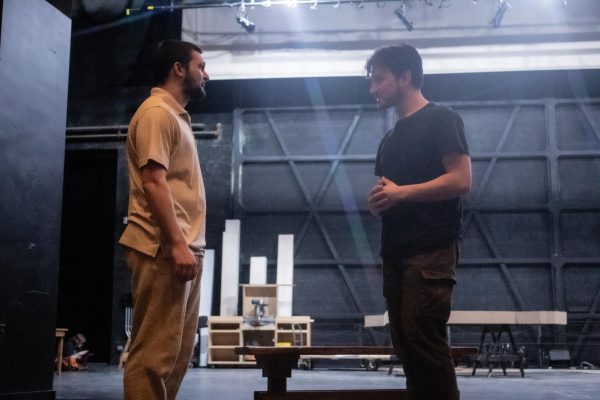Unfamiliarity can lead to misconceptions when non-majors take visual art classes
Empty chairs and easels surround a still life in the middle of the room: an art lesson awaiting its students to begin class and turn what is before them into their own. Everything is splattered in rainbow hues and smells faintly of clay and pigment, casualties of the artistic process.
Such art room sights are not unfamiliar to any student who graduated from grade school art classes, yet on a college level, can seem quite different to those who are non-art majors.
Visual arts classes at Baldwin Wallace are often taken by non-art major students to fulfill requirements or as an elective to nurture their artistic side. For many non-arts students, having only been in lower level arts classes has influenced their expectations going into studio art at the university level, said Steven Ziebarth, professor of art.
“There are students who maybe come in with a set of expectations built out of junior high or high school, where maybe the art teacher was mostly interested in encouraging people in the arts, and it may have been real easy,” he said. “Just throw paint at the canvas and have fun, and everyone gets an ‘A’ sort of thing.”
If a student has had such an experience in high school, it may color their expectations for an art class at BW. Despite the possibility of some non-major students expecting more encouragement than critique, there are students who stand their own beside art majors in the class.
“I’m always amazed,” said Ziebarth, “that we have non-majors come in on a regular basis who, just out of pure enthusiasm and a diligent work ethic, will create just as strong a work as our art majors.”
Alyssa Spear, a senior neuroscience and chemistry major, having experienced art in high school, knew of the softer attitudes of rudimentary art classes. However, taking an introduction painting class with Ziebarth, her love of painting motivated a want for development.
“It was nice having a more formal education on art, because before it was “paint what you want, do it right in the center, don’t worry about all the rules of art,’” said Spear. “My very first painting, it was a lemon, and I put it right in the middle and [Ziebart] was like, ‘Yeah this is good, but let’s talk about not putting it in the center.’”
Through the course, Spear said she really developed her skills and grew as an artist.
“Critiques were really good, and even though I wasn’t an art student, my paintings were pretty good, I got really good feedback,” she said. “Even though it seemed kind of competitive between the art students, they were still really helpful.”
Studio art may be an unexpected learning experience and challenge, but Darlene Michitsch, chair and associate professor of the Art and Art History Department, believes that it can provide students with a powerful means of creativity.
“As far as studio art, there’s nothing like having the opportunity to create,” said Michitsch. “To acquire some of the basic skills that you need to make something, that’s personally expressive, even if you don’t major in art or intend to pursue it in anyway. That’s something you will carry with you forever. It’s edifying.”
Despite art classes not quite being what some non-majors expect, the takeaways transcend major experiences. A challenging environment fosters creativity and skills for expression that all students can benefit and grow from.
“I’m really thankful for the non-majors,” said Ziebarth.
According to Ziebarth, the studio art classes are often a majority non-art majors, and their presence brings a unique perspective to the classroom that calls students to rise to the challenge and nudge the lemon from the center of the canvas.
The Exponent is looking for financial contributions to support our staff and our newsroom in producing high-quality, well-reported and accurate journalism. Thank you for taking the time to consider supporting our student journalists.












































